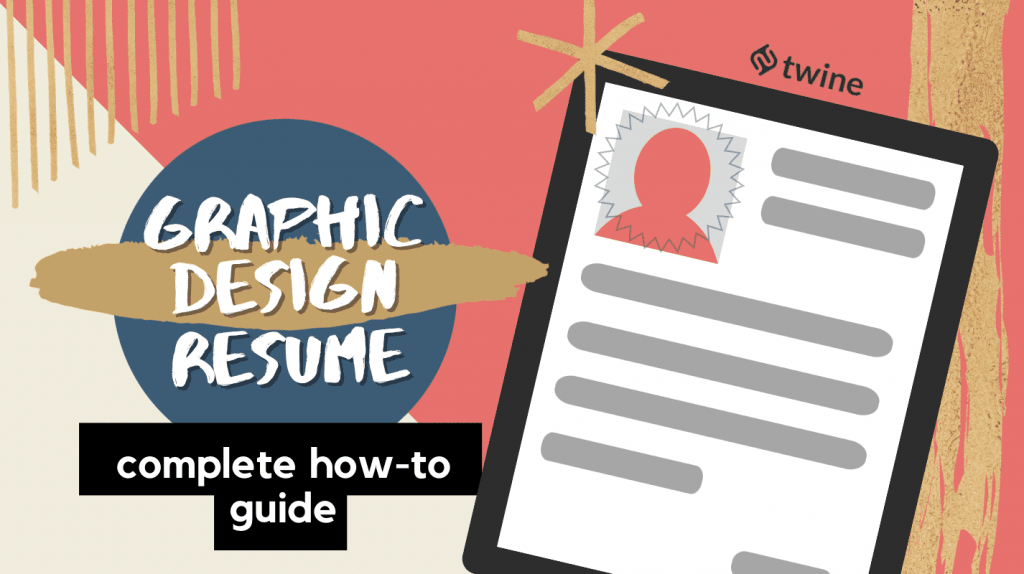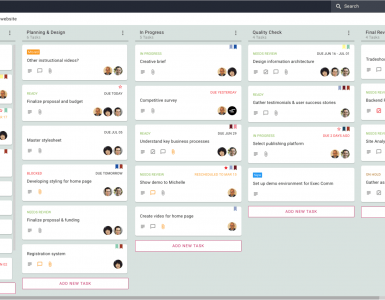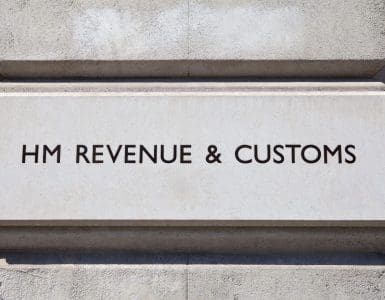
Creating a great resume on its own isn’t always easy. But to make a great graphic design resume that outshines your talent, and easily beats the competition? Well, that’s a whole other challenge in itself…
For graphic designers, it’s not enough for your resume to simply outline your skills and experience. A graphic design resume must also be visually appealing and form a showcase of your capabilities as a designer. Typography, color choice, design styles all come together to form an informative work of art, that your potential employer will get the enjoyment of viewing.
According to Muse, employers look at resumes for an average of just six seconds before deciding whether to move forward with a candidate. That means you’ve only got seconds to grab – and hold – their attention.
To be successful in your graphic design career, you need to know how to navigate the hiring process and design your resume around it. It’s the first step into carting you in the direction of graphic design stardom. Think you’re ready?
Step #1: Applying For a Graphic Design Job
Every job-seeker takes a slightly different path, but the basic process is likely to go something like this:
- Browse job sites like LinkedIn, Twine, and Indeed, reading job descriptions and finding those you are qualified for.
- Apply to jobs with a well-optimized cover letter alongside your resume. You may also attach a copy of your portfolio, or a link to your design website, if you have one.
Pro tip: ensure your resume contains keywords that are relevant to the job you’re applying for. Applicant tracking systems (ATS) filter resumes for keywords, years of experience, skills, and educational background. - If your resume passes initial screening, it will then go to the hiring manager. If they like what they see, you’ll be invited to interview. This will involve discussing your experience, skill set, and ability to fit into the team. You might also get a chance to discuss your creative portfolio, and how your style aligns with their vision for the job.
- You may be asked to complete a practical assessment, such as a piece of design work, during or after the interview. If all goes well, you might be offered the job.
But what kind of resume gets you through that initial screening process? How do you get to impress the hiring manager to the point that they just must arrange an interview?
Simple – you’ve gotta know what they’re looking for in the ideal graphic design resume…
Step #2: Know What Employers Look For
Recruiters and hiring managers have it tough; they might look through hundreds of resumes when hiring for just one job. What can we say, the completion is pretty fierce!
You need to stand out if you want the ball rolling, and you need to stand out fast. That means striking the right balance between aesthetics and readability, while also making sure all the essential information is included.
Let’s take a look at the ingredients of a perfect design resume:
Personal details & contact information
This sounds basic, but you must get it right – you need to include your full name, email address, and contact number. Some people still include a postal address, but that’s a bit old-fashioned nowadays – it’s totally your choice. If your preferred name is different from your legal name, you can indicate that using brackets, for example, James (Jim) Smith.
Oh, and let’s not forget the email address – the connection your potential employer will be using to get in touch with you. Your email address needs to look and sound professional.
For example, an email address like: coolguy1234@yahoo.com doesn’t exactly exude professionalism (no offense, coolguy1234). Instead, do the classic strategy and use some form of your name, take joe.a.johnson@gmail.com for instance. It’s clean, professional, and easy to remember – all phrases you’d want your employer to describe you as!
Work experience
Your potential employer wants to know that you have relevant experience, so you need to feature this section prominently. Include your most recent experience first, and work backward.
Here are some pointers for writing your work experience section:
- You don’t need to list every job you’ve ever had. If it’s not directly or tangentially connected to graphic design, leave it out.
- Remember: voluntary work is definitely worth including – as long as it relates to design.
- Summarize each role. Focus on what you achieved, not just what you did. (For example, “I worked on the new product catalogue” doesn’t tell us much. Whereas, “I was the lead designer for the new product catalogue, which led to a 20% increase in sales over the same period last year” is far more impressive!)
Before you list a previous client by name, ensure your contract doesn’t include a nondisclosure agreement. (We’ve seen people get caught out by these clauses, and the result is pretty sticky…)
Education and training
While a college degree isn’t necessarily an indication that you’re a great graphic designer, you should include it on your resume if you do have one. Often, a degree (even in an unrelated field) will give you a well-rounded set of skills that employers find incredibly useful.
If you don’t have a degree, not to worry, you’re still in the running! Instead, mention how you’ve used the time to optimize your passions and skills. List any other relevant educational achievements, and upsell how you’ve found ways to advance your design career.
Not all qualifications and achievements are paid for – you can find many awesome, and valuable courses and programs online that are 100% free and end in a resume-worthy qualification. Need to bulk out your graphic design resume with impressive attainments? Check out Format‘s list of free graphic design courses here.
Step #3: Skills That Look Good On Your Graphic Design Resume
The skills section is where you list the specific skills you have that relate to the job. Here are some graphic design skills that you’ll want to list if you have them:
- Software: Adobe Illustrator, InDesign, Photoshop, Acrobat
- Programming languages: HTML, CSS, Javascript
- UI/UX design
- Typography
- Branding
- Photography
- Print design
- Color theory
- CMS solutions (WordPress, ecommerce platforms, etc.)
This is not an exhaustive list, but a starting point. Your chances of getting a job are higher if you can list as many relevant skills as possible.
Remember, saying you have a skill isn’t enough – you’ll need to be able to demonstrate it. Ideally, your portfolio will include at least one sample that illustrates each skill you claim to have. If you hold any relevant qualifications and certifications or are listed on a designer’s directory you might also mention those.
Awesome Graphic Design Resume Examples:
You might be reading this article because you’re stuck in a job-seeking rut and are in search of inspiration for your own graphic design resume… we’ve all been there!
We’ve collated some of the greatest and best here to inspire you. Check out these five awesome graphic design resumes to get you in the right direction:
Ethelia Young
Ethelia earned a bachelor’s degree in new media design from the Rochester Institute of Technology and interned at YouTube.
Her resume lets her work speak for itself: her education, work experience, and leadership skills stand out. Ethelia went for a clean, no-frills design, with her nickname and section headers in light blue.
This resume contains all of the applicant’s relevant experience and skills, including Adobe products, programming languages, and Microsoft Office.
She also makes herself stand out from the competition by sharing that she speaks three languages – a serious asset in today’s globalized world!
If you’re a recent graduate, pay particular attention to this one. Ethelia draws on her internships and voluntary roles from her college career to showcase her skills and suitability for the job. Remember that both technical and soft skills matter.
Maria Aguado
Maria is currently working as a barista at Starbucks, which isn’t exactly the work experience a hiring manager would look for in a graphic designer.
However, prior to moving to France, she was an artistic director at a PR agency in Spain. Her resume takes playfulness to the next level, making it both attention-grabbing and a showcase for her design skills.
This resume is heavy on the visuals, but still contains all the relevant details an employer needs to see: work experience and education.
The additional details, such as the circle chart to illustrate her software skill levels, and the carnival high striker to show her proficiency in various languages are creative add-ons.
In any other industry, we’d caution you against using a resume that relies this heavily on visual content. But, for a designer, it’s perfect.
Marcy Monko
Marcy takes a similarly fun and playful approach to her resume, using bright colors for her section headings and a hand-drawn logo. Using this design choice for the headers makes it easy to find everything at a glance.
Her work experience is front and center, and speaks for itself, with past roles at well-known companies including CBS, Wix, and Nickelodeon.
Marcy takes the unusual approach of positioning her contact information at the bottom of the page. There’s nothing to say it has to go at the top, so don’t be afraid to play around with the layout in your own resume. Just follow Marcy’s example and ensure your relevant work experience takes center stage.
Chuck D. Lay
Chuck’s resume is extraordinarily creative and eye-catching. He chose to mimic a traditional newspaper classified ads section, using the box layout to differentiate his contact information, work experience, education, and skills sections.
Including hand-drawn black-and-white images and the coupon at the bottom of the page ties all of the information together in a “vintage ad” theme. Also, the use of the portmanteau “designerd” (“designer” and “nerd”) sums up his personality and enthusiasm wonderfully.
Hili Noy
Hili specializes in illustration and motion graphics, with her skills on display in this crisp and minimalist resume. She incorporates all the details an employer needs while still maintaining a good amount of white space. Icons are also used to draw attention to each of her skills.
In addition to illustrations, Hili uses font weights and divider lines to break up her resume into easily scannable sections. There’s also a bar chart, which is used as a visual indication of her software skill levels.
If you’d like to check out a few more examples of effective resumes, we’d recommend this article from Livecareer.
Wrapping up
Whether you’re looking for a full-time office-based position or your next work-from-home or freelance gig, your resume is what will sell your skills to a prospective employer.
As a graphic designer, your resume is your chance to make a great first impression. Combined with an online portfolio, a well-designed resume will help convince potential employers that you are the ideal candidate for the job.
While your graphic design resume should be creative, it also needs to be easy to read and understand. Remember that you have only seconds to make a first impression, so ensure all the relevant information is front and center. There’s a perfect balance between artistic license and readability, so make sure you strike it.
Important: you don’t need to use the exact same resume for every job you apply for. You can and should customize your resume for each prospective employer, reflecting the kind of style they’re looking for and highlighting the most relevant aspects of your experience.
Looking to find work as a freelance graphic designer? Sign up to Twine and pitch on a varied selection of graphic design projects each week. Once you’ve secured a client, streamline the revision process with ReviewStudio, which allows you to track revisions and annotate drafts with detailed feedback.













